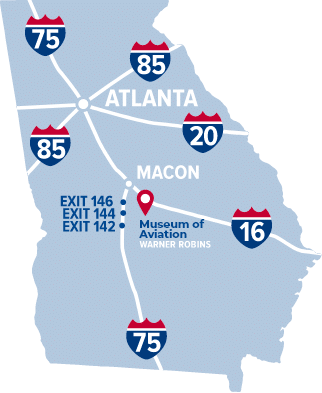The TG-4A is a two-place, dual control glider manufactured for the Army Air Forces (AAF) by the Laister-Kauffman Aircraft Company during WWII. To meet the urgent Army need in 1941 for a training glider, Laister-Kauffman adapted its Yankee Doodle mid-wing design. Three examples were ordered for evaluation as XTG-4 and two production contracts followed, each for 75 TG-4s with SCR-585 radio to permit communication between the glider and the towing aircraft.
The TG-4A’s wings were made of spruce and mahogany plywood covered with dope fabric. It is equipped with spoilers (used to increase descent) as well as ailerons. The fuselage is constructed of welded chrome-molybdenum steel tubing which is fabric covered. The landing gear is a single unsprung wheel with a disc brake. In addition, there are skids on the nose, tail and wing tips.
During WWII, Robins AFB served as a logistics support base for all TG-4As assigned to the Southeast. The TG-4A on display was delivered to the Army Air Corps 1148th Glider Training Squadron at Fort Sumner, New Mexico in November 1943. It was removed from service in September 1944. It arrived at the Museum in 1987 for display.











